In general, moles have a small and cute image, but for those who run agriculture or home gardens, they dig holes and build nests in the ground, which can cut roots, knock down seedlings, and cause problems in fields and gardens. It can be said that it is a troublesome person in that it is beaten up.
Especially in the season when the temperature rises, many farmers may notice that many mole holes are dug in their fields.
This time, we will explain the ecology of moles, the current state of damage to crops, and measures to prevent and prevent damage and how to repel them.
Mole ecology
Moles are mammals that belong to the Mole family, and live widely in the northern hemisphere, including Japan. The body length is about 12 to 18 cm, and some species grow to about 20 cm.
Appearance is that the whole body is covered with fine hair, and it is characterized by dark brown and black brown. The tip of the nose and limbs that are not covered with hair are pink.
There are several types of moles, including endemic species, inhabiting Japan. The koube mole mainly lives in western Japan, and the azuma mole in eastern Japan. It is most densely populated in wet soil plains.
Moles spend most of their lives in the soil, so they have large front legs that make it easier to push through the soil. It has a flat, shovel-like shape with sharp claws, and digs tunnels to find food. One of the evolutions to adapt to life in the soil is that the front legs grow sideways instead of downward.
very good sense of smell and hearing
Because moles spend most of their lives in dark soil, their eyesight deteriorates.
On the contrary, the sense of smell and hearing are excellent. In particular, the part of the nose called the "Eimer organ" is well developed and sensitively picks up vibrations in the soil. When looking for food, they use these sensory organs effectively to find prey.
Although it is not well known, they are also good at swimming, and they can be seen swimming in rice fields and irrigation channels.
They are carnivorous, preferring to eat earthworms, frogs, and scarab beetle larvae in the ground. Some species of moles contain paralyzing venom in their saliva and have the property of storing food alive in their burrows.
It is said that they dig tunnels of more than 50 meters a day to find food, and they dig at a speed of about 30 cm per minute.
As a result, they consume a lot of calories and have a strong appetite, eating about half of their body weight per day. They also eat moth larvae, worms, and leeches. It is so vulnerable to starvation that it will starve to death if it does not eat for 12 hours, and it will die easily if there is no food.
Territorial awareness is very high, and in areas where there are many inhabitants, moles driven out due to territorial disputes are often seen starving to death.
Current Status of Agricultural Damage Caused by Moles
Moles are relatively small in size compared to other wild birds and animals, but they cause serious damage to agriculture. According to a 2017 survey announced by the Ministry of Agriculture, Forestry and Fisheries, the amount of agricultural damage caused by moles is 14.28 million yen per year. Compared to wild boars and deer, the amount of damage is small, but the hardships of those who are damaged are great, and the numbers cannot be ignored.
By the way, moles are carnivorous and do not eat crops directly. As a result, damage occurs in the ground and on the surface of the ground, not on crops above ground. If there are traces of chewing on vegetables, it is not the work of moles, but the work of other animals such as rats.
Specifically, there are cases in which the roots of vegetables are cut during the process of digging tunnels, and damage in which planted seedlings fall. Also, in paddy fields, there is a risk that water will flow into holes dug by moles, causing the ridges to collapse.
In addition, ``rats destroy crops through tunnels dug by moles'', ``the soil's water retention rate declines and growth deteriorates'', and ``the farmland environment deteriorates due to fewer earthworms''. damage is mentioned.
None of these directly eat up the crops, but if the environment of the farmland deteriorates, the quality of the crops will decline. As a result, it will affect product sales, etc., so it is important to take proper measures.
Before taking measures against moles
In order to reduce the damage to crops, it is necessary to take measures to repel moles, but in order to implement effective measures, it is necessary to investigate the conditions of mole habitats in advance. .
Advance preparation
Before taking measures against moles, it is important to find tunnels (main roads) frequented by moles as a preliminary preparation.
Moles make up multiple rooms in the soil, such as "places to catch food", "places to store food", and "places to hide from intruders". The tunnels for going back and forth between these main rooms are called "main roads", and the other tunnels dug to find food are called "branch roads".
The main road is used many times a day, but the branch roads are rarely used and often end only once. Therefore, in order to take measures against moles, it is important to find the main road that moles frequently use and take measures with pinpoint accuracy.
How to find the main road
First, carefully observe the ridges of fields and rice fields, and look for areas with raised soil or mole mounds (mounds of soil dug by moles). If you find a hollow tunnel by stepping on it with your foot, etc., crush the tunnel once and bury it.
Moles have a habit of repairing the main road when it is destroyed, so if the tunnel is restored later, it is the main road. If there is no change in the tunnel and it remains buried, it will become a branch road, so observe another place to find the main road.
Mole countermeasures and repelling methods │ 3 types of countermeasures
Now, I will explain specifically how to deal with moles and how to repel them.
1. deal with odor
The first is odor control. Moles have a very keen sense of smell and are very sensitive to smells. Therefore, using this ecology, a repellent with a pungent odor is used to drive away the moles.
There are various types of repellents, including a stationary type, a type that inserts into burrows, and a type that sprays.
In addition to commercially available repellents, it is also possible to put garlic, acetic acid, red pepper, etc. in a container and install it.
In addition to this, cluster amaryllis is one of the anti-mole measures that have been around for a long time. Higanbana contains a toxin, and moles tend to dislike this poison. Taking advantage of this habit, you can use it as a countermeasure by cutting off the flowers and driving them away with their odor, or by planting flowers directly in the ridges.
If you use odors, be careful not to let human odors get on the repellents and containers you install. In addition to using gloves, it is recommended to rub the soil once. Also, if the type has a strong irritating odor, if it is too close to the crops, the odor may be transferred and the growth may be affected, so be careful.
After it rains, the odor is washed away and the repellent effect is greatly reduced, so maintenance such as frequent replenishment of the repellent is required.
Quiet talk: Countermeasures using chewing gum
A unique way to combat and repel moles is to use chewing gum. It is also possible to exterminate land rats.
Moles and mice lured by the smell of chewing gum will experience indigestion if they eat the gum.
Moles, in particular, are not immune to starvation and will die if they suffer from indigestion. However, considering that gum is sown in the fields and carcasses are likely to be left unattended, this is not a recommended countermeasure.
2. Countermeasures with sound and vibration
The second method is to use sound and vibration as countermeasures. It does not kill and does not use medicine, so it is a recommended countermeasure that is gentle on the fields.
Moles have a tactile organ called the Eimer organ on the tip of their nose that senses vibrations. As mentioned above, moles, which have almost no eyesight, rely on the vibrations sensed by the Eimer organ to obtain various information.
The purpose of this method is to take advantage of this property and generate sound waves underground to warn and avoid moles, thereby driving them away. Specifically, a sound wave generator is inserted into the main road to keep the moles away.
In addition, immediately after the sound wave is generated, it is expected that the mole will panic and move around violently temporarily. If you panic, you may instead run into the center of the land, so when you install it for the first time, consider the positional relationship with the main road, and change the installation location so that it gradually drives out from the center of the field. You should go.
3. deal with traps
The third method is to trap moles. Since it is a fundamental measure, it is the most effective method compared to other avoidance measures.
There are two types of traps: cylindrical type and scissors type. The cylindrical type can be captured from either the left or right side of the Mole Tunnel. With the scissors type, the direction that can be captured is either left or right, but it is very powerful because it is a grip type.
As a point to note when setting up a trap, first of all, new traps have an artificial smell, which makes moles wary, so try to remove the smell as much as possible by rubbing soil in advance. It's a good idea to keep Also, be sure to wear gloves when installing.
*When it is unavoidable to capture or collect for agricultural or forestry business activities, permission from the Minister of the Environment or prefectural governors is not required for all species belonging to the Mole family. Law Enforcement Regulations, Law Articles 12 and 13).
Therefore, if there is damage in your own fields, etc., and you have no choice but to capture it, you can capture it without permission.
However, at facilities that are open (for example, lawn damage countermeasures at golf courses), trapping moles requires a permit to capture harmful birds and beasts, just like wild boars and crows. Please consult with your local government in advance and obtain permission.
In addition, among moles, there are endangered and near-threatened species listed in the Red Data Book. For example, in places where there is a possibility of traps such as the red spider and the giant mole, it is necessary to apply to the Ministry of the Environment in addition to the prefectural government for a permit to capture them.

 箱罠
箱罠
 くくり罠
くくり罠
 パーツ類
パーツ類
 電気柵
電気柵
 自作キット
自作キット
 防獣グッズ
防獣グッズ
 監視カメラ
監視カメラ
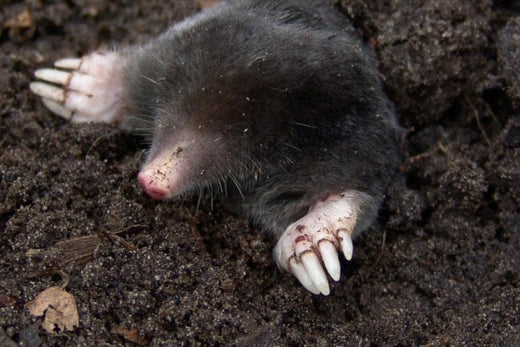

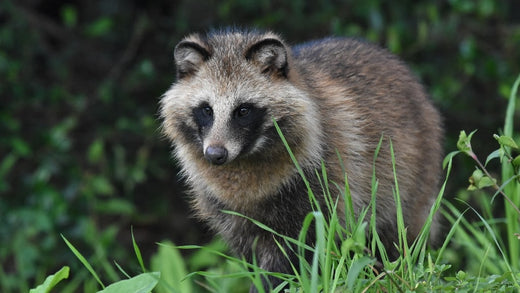

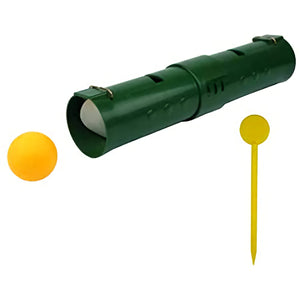
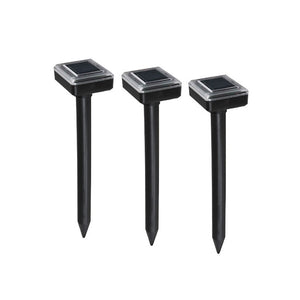


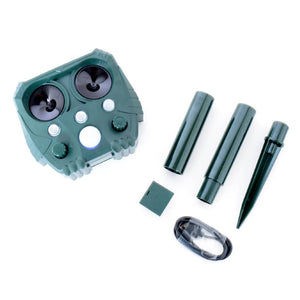
 box trap
box trap
 tying trap
tying trap
 enclosure trap
enclosure trap
 Prevention and avoidance goods
Prevention and avoidance goods
 electric fence
electric fence
 trap surveillance camera
trap surveillance camera
 transportation goods
transportation goods
 Trap detection sensor
Trap detection sensor
 hunting supplies
hunting supplies
 hunting books
hunting books
 Anti-bird goods
Anti-bird goods
 Agricultural materials/machinery
Agricultural materials/machinery
 boar
boar
 deer
deer
 Kyon
Kyon
 monkey
monkey
 raccoon
raccoon
 Badger
Badger
 palm civet
palm civet
 raccoon dog
raccoon dog
 nutria
nutria
 mouse or rat
mouse or rat
 Mole
Mole
 bear
bear
 pigeon
pigeon
 Crow
Crow







